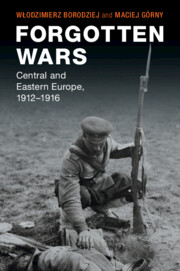Book contents
- Forgotten Wars
- Studies in the Social and Cultural History of Modern Warfare
- Forgotten Wars
- Copyright page
- Contents
- Figures
- Maps
- Capsules
- Additional material
- Introduction
- Part I The Fronts
- Part II The Rear
- Part III Occupation
- 8 The First Moments
- 9 New Orders
- 10 Mission civilisatrice
- Afterword
- Select Bibliography
- Index
9 - New Orders
from Part III - Occupation
Published online by Cambridge University Press: 15 March 2021
- Forgotten Wars
- Studies in the Social and Cultural History of Modern Warfare
- Forgotten Wars
- Copyright page
- Contents
- Figures
- Maps
- Capsules
- Additional material
- Introduction
- Part I The Fronts
- Part II The Rear
- Part III Occupation
- 8 The First Moments
- 9 New Orders
- 10 Mission civilisatrice
- Afterword
- Select Bibliography
- Index
Summary
In the western Russian Empire and Romania the Germans occupied territory previously unknown to them. Austro-Hungarian officials had, at least in theory, some idea about both Serbia and the Russian Polish lands. Regardless of the starting position, however, each occupier had its own idea of the new regime it wanted to establish. To do so it would need the assistance of local people, but it had little or no intention of consulting them on the appropriateness of its plans. The question of official time is a good illustration of the approach taken by the occupiers. It so happened that the countries participating in the war were not only located in different time zones (Russia did not ratify the international agreement on this matter and left the setting of local time to municipal authorities), but also used different calendars. Every occupier put the clocks either forward or back, which was not devoid of symbolic meaning.
- Type
- Chapter
- Information
- Forgotten WarsCentral and Eastern Europe, 1912–1916, pp. 286 - 313Publisher: Cambridge University PressPrint publication year: 2021

